1lumen selects and reviews products personally. We may earn affiliate commissions through our links, which help support our testing.
Cyansky M3 review

Cyansky M3 specifications
| Brand/model | Cyansky M3 |
|---|---|
| Category | EDC flashlights |
| LED | Cree XP-G3 S4 |
| Lumens | 700 lm |
| Beam intensity | 1330cd (73m) |
| Battery config. | 1*16340 / 1*CR123A |
| Material | Titanium |
| Modes | 4 |
| Blinkies | Strobe |
| Reflector | OP reflector |
| Waterproof | IPX8 (2m underwater) |
| Review date | March 2021 |
Introduction:
The M3 is a tiny light from Cyansky (owned by Freasygears), which differs from pretty much all their other lights. This one is a titanium EDC flashlight and takes a 16340 cell. All Cyansky’s other lights seem to be “tactical” dual switch aluminum flashlights, like the Cyansky H5 that we’ve reviewed before.
This light really is small: when I opened the package, my kids remarked at how cute it was and were more interested in playing with it than they are with flashlights 10 times as bright.
In terms of competition, there’s a couple of brighter 16340 lights like the Acebeam TK16 and Jetbeam E1 but these are both noticeably bigger and heavier. The M3 competes more with the likes of the Olight S1 Mini, Fenix E16 and Klarus Mi1C.
Package quality.
Cyansky used a folded plastic box for the M3. The overall package length is tiny at less than 8cm long and wouldn’t look amiss hung up next to AA batteries in a supermarket.
Cyansky fit a surprising amount inside the box:
- Cyansky M3
- 16340 cell (with micro-USB charging)
- Micro USB cable
- Lanyard
- Keyring attachment
- Clip
- Spare O-ring
- Manual
- Warranty card
- Battery warning notice
The cell is packaged inside the light, along with a plastic insulator that needs removing.

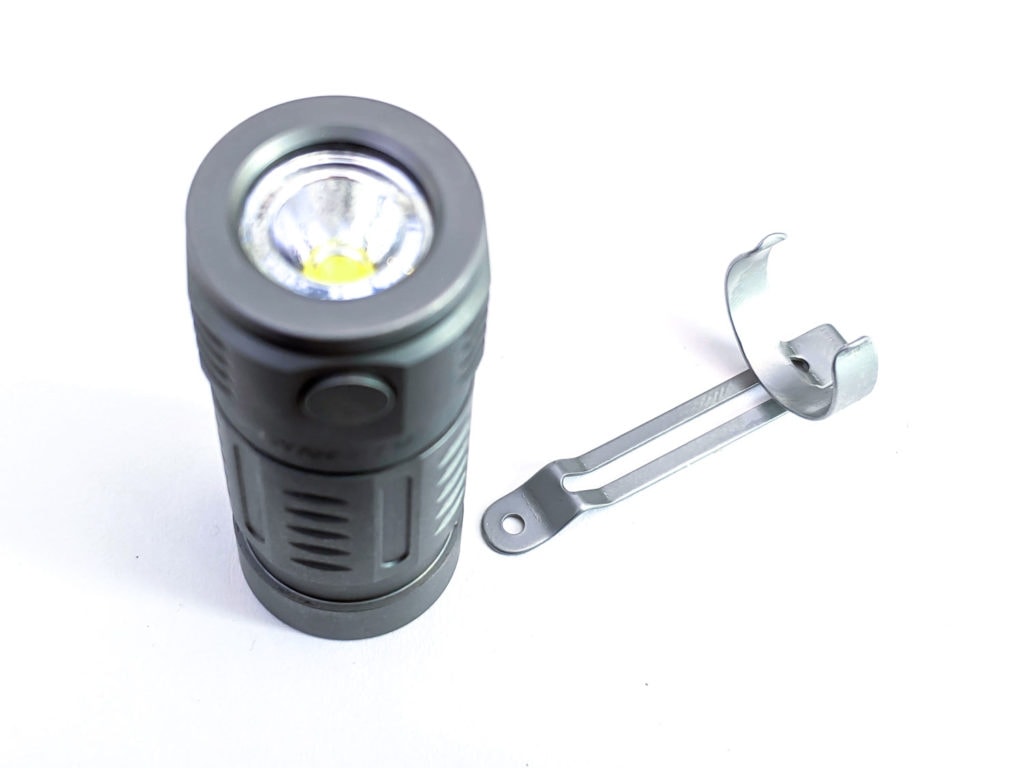
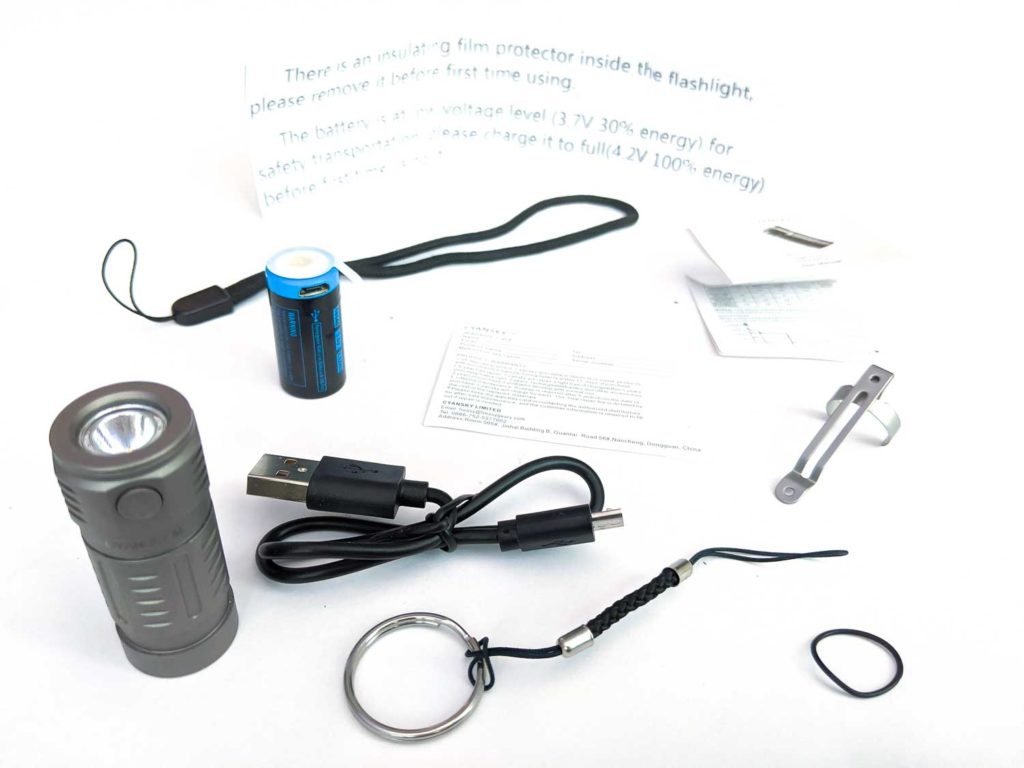
Flashlight in use
The Cyansky M3 is a very small light but feels solid in the hand due to the weight of the titanium. Titanium is about 1.7 times as dense as aluminum. At 30g without the cell it’s not exactly heavy but something like the GT Nano is just 17g.
It’s short and fat, unlike flashlights that take AA or AAA batteries. In fact it’s 51mm long, which is just 1mm longer than a standard 50mm AA battery. It’s also very easy to grip due to the knurling. It’ll easily fit in a small pocket and it will tail stand easily too.
The side e-switch switch is very near the top and doesn’t protrude much at all (about 0.2mm). This helps prevent accidentally turning it on (it’s hold-to-turn-on too, see below). But this also makes it difficult to find the switch without either looking at the flashlight or using the pocket clip as a guide. Without the clip, I found the quickest reliable way to turn it on in the dark (when else would you use a flashlight?!) was by putting my hand all the way round the end of the light and squeezing the whole thing.
With the pocket clip attached, it’s easy to locate the clip, then move your thumb 180° round to the button. It won’t roll much even without the clip but adding it makes it extra stable. The clip is quite thin and it’s not as strong as clips on bigger lights. I wouldn’t be surprised if it bent out of place if you weren’t careful. The pocket clip can be rotated to any position but seems to be designed to go opposite the switch. The light is easily scratched when attaching or removing the clip, so be careful.
The package comes with both a lanyard and a keychain attachment. If you attach one of these to the tail then the M3 will still tail stand but not completely flat.
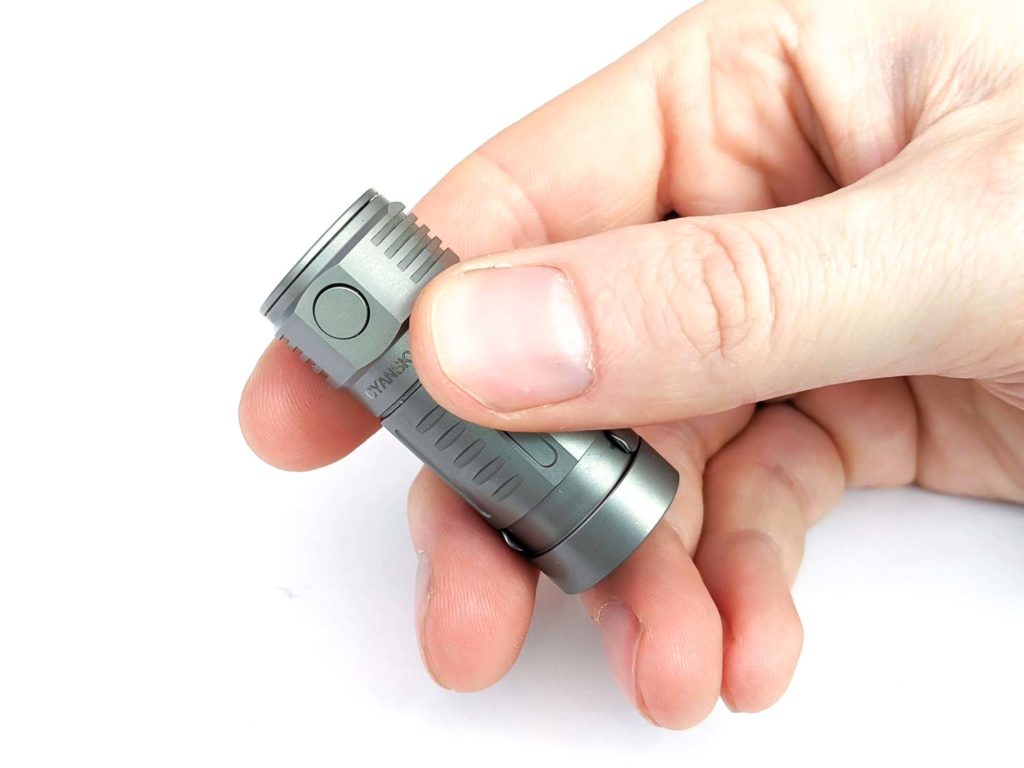
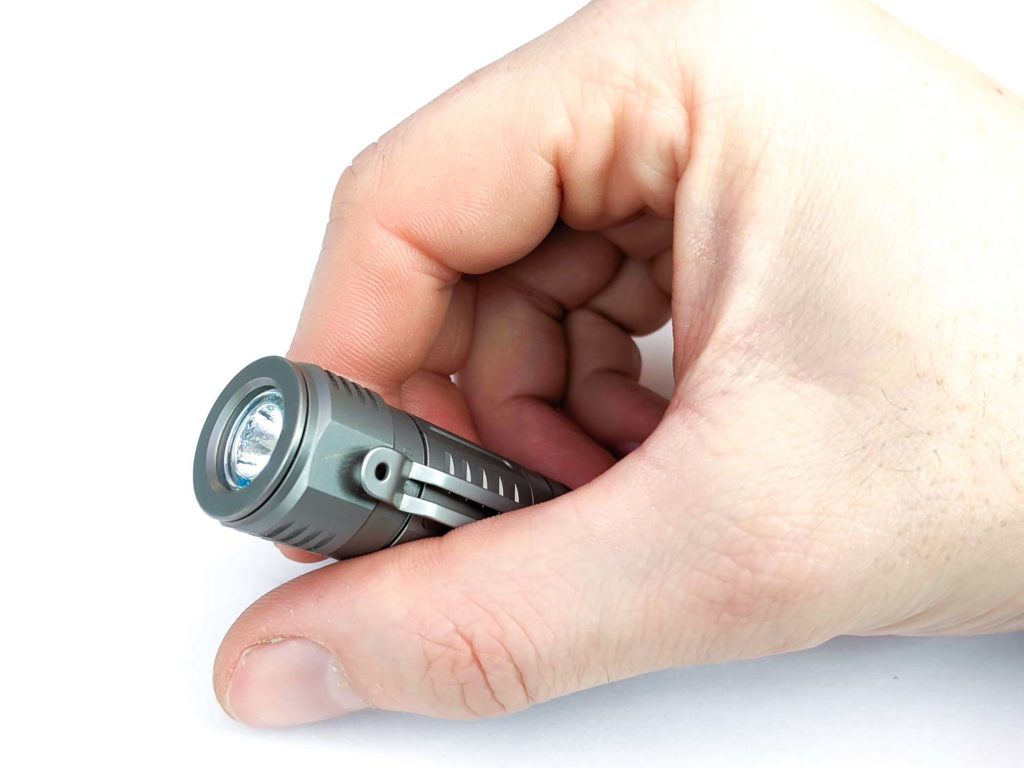
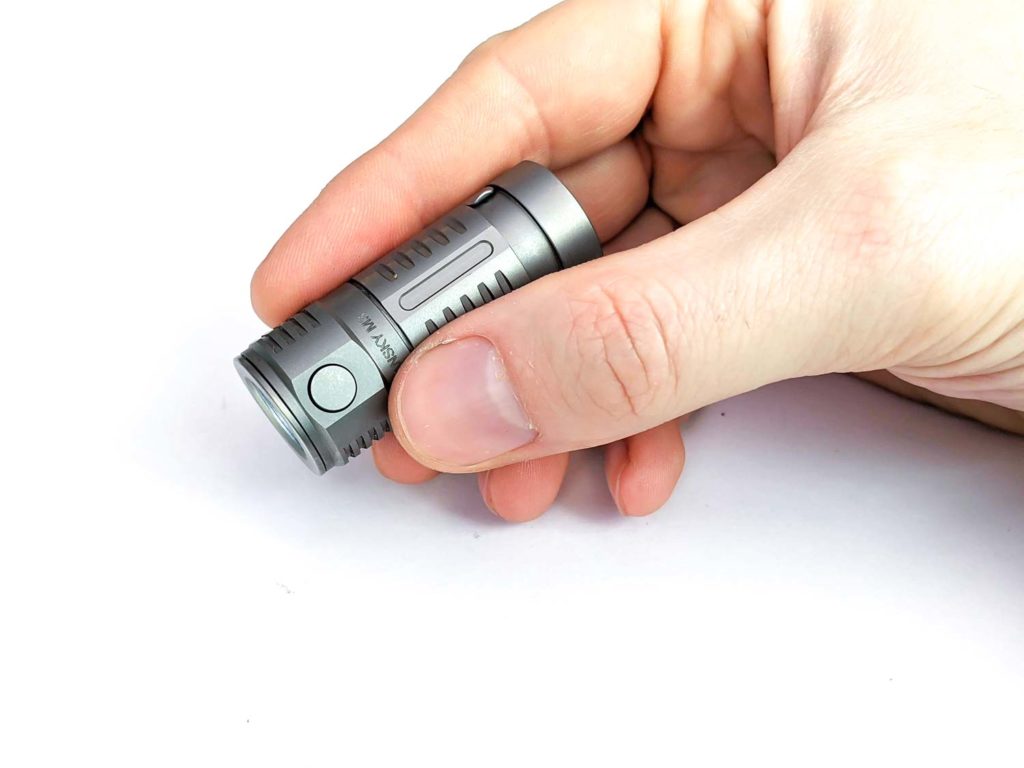
Build Quality, and Warranty
The Cyansky M3 feels very well built and I like the matte grey titanium look. The M3 isn’t anodised but being a titanium flashlight it shouldn’t corrode like unanodized aluminium does. Titanium is stronger than aluminium too, so it should last well on a keychain, though it may get a few scratches from keys.
The M3 comes in 2 main parts as the body and tail is a single block of metal. The threads are square cut and fit well. Sometimes titanium threads feel rough or even gritty compared to aluminium but the ones on the M3 seem OK.
Freasygears / Cyansky provide a 5 year warranty, where they’ll repair or provide a replacement if the flashlight fails due to material or workmanship.
Inside the light there’s a spring on the tail end and a short brass contact on the head end. There’s no magnet but it looks like there would be room to fit one in. The head also has physical reverse polarity protection in the form of 2 protruding bits of metal.
The bezel rotates with a bit of force but doesn’t unscrew and I don’t seem to be able to pry it loose. There’s no obvious way to remove the driver PCB either.
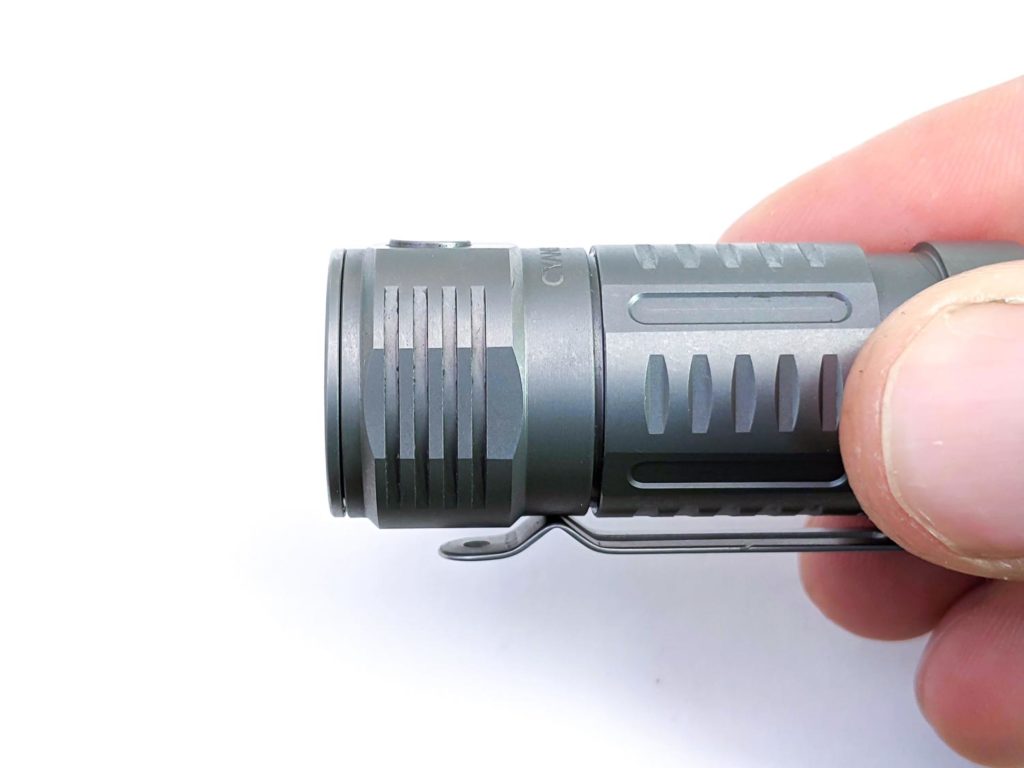
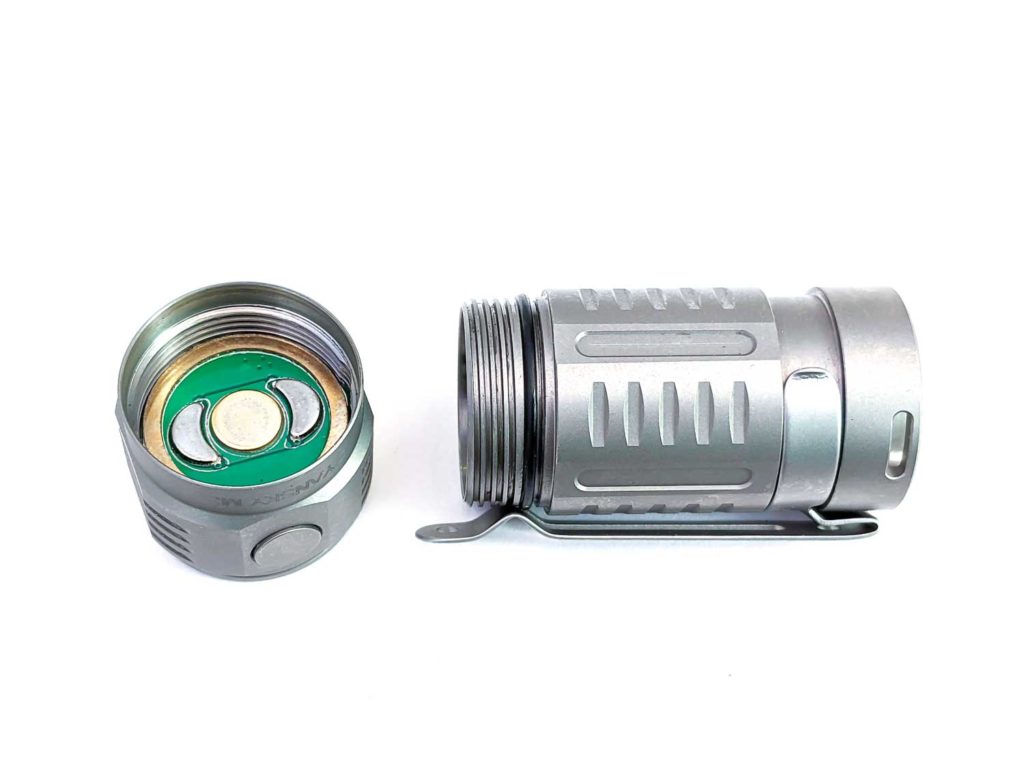
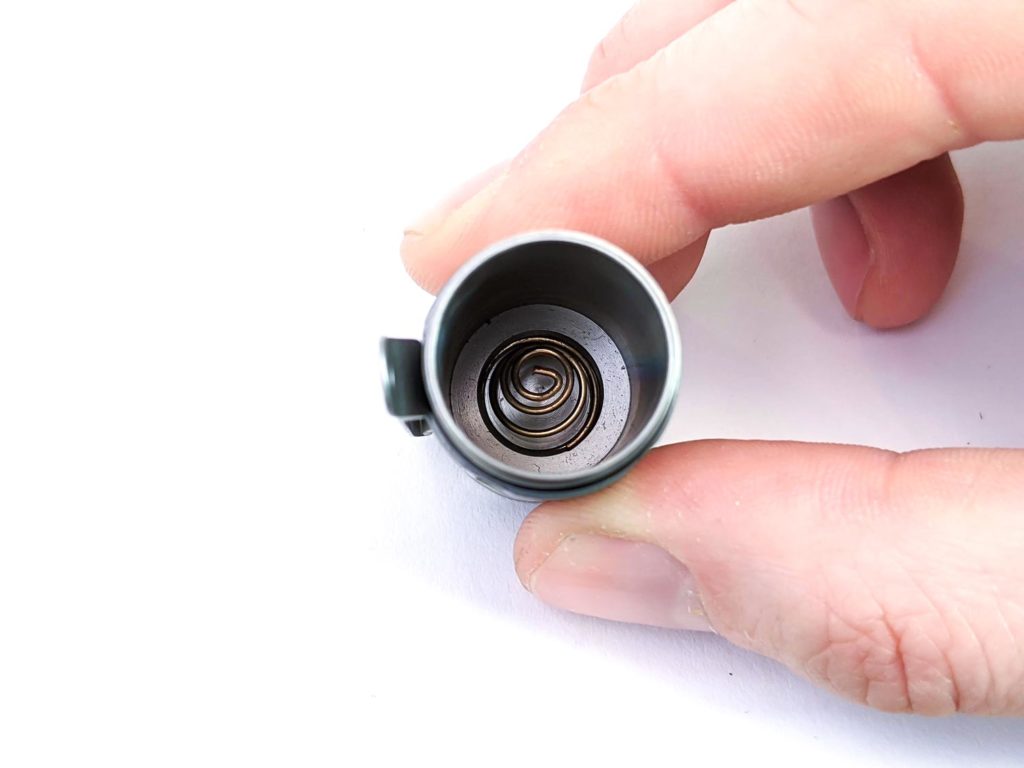
LED, Lens, Bezel, and Reflector
The reflector in the Cyansky M3 is tiny. The actual parabolic part of it is only 9mm wide, which is about 40% of the overall bezel diameter. Contrast this to the throwy GT Nano, which manages to fit a reflector over twice as wide as the M3’s in a bezel that’s only 2mm wider. The M3’s reflector is orange peel and not especially deep either: from the top of the lens to the brass connector on the driver is under 11mm.
Cyansky advertises the lens as “toughened ultra-clear”, with anti-reflective coating. The reflector and lens are surrounded by the large titanium bezel, which should protect it very well.
The tiny reflector makes the M3 floody but the 3.5mm XP-G3 LED is a good match and results in about 2lm/cd. This is similar lumens per candela as other keychain / EDC lights, like most RovyVon Aurora lights.
The XP-G3 is an OK LED but isn’t often favoured by flashlight enthusiasts due to the worse tint and CRI than the previous generation XP-G2. Cyansky has used an S4 bin XP-G3, which is at the higher end of the efficacy scale. The colour temperature isn’t specified but looks to be around 6500K based on other lights I have. The CRI isn’t great – the S4 bin comes in 70 CRI and 80 CRI and I wouldn’t be surprised if the M3 has a 70 CRI one.
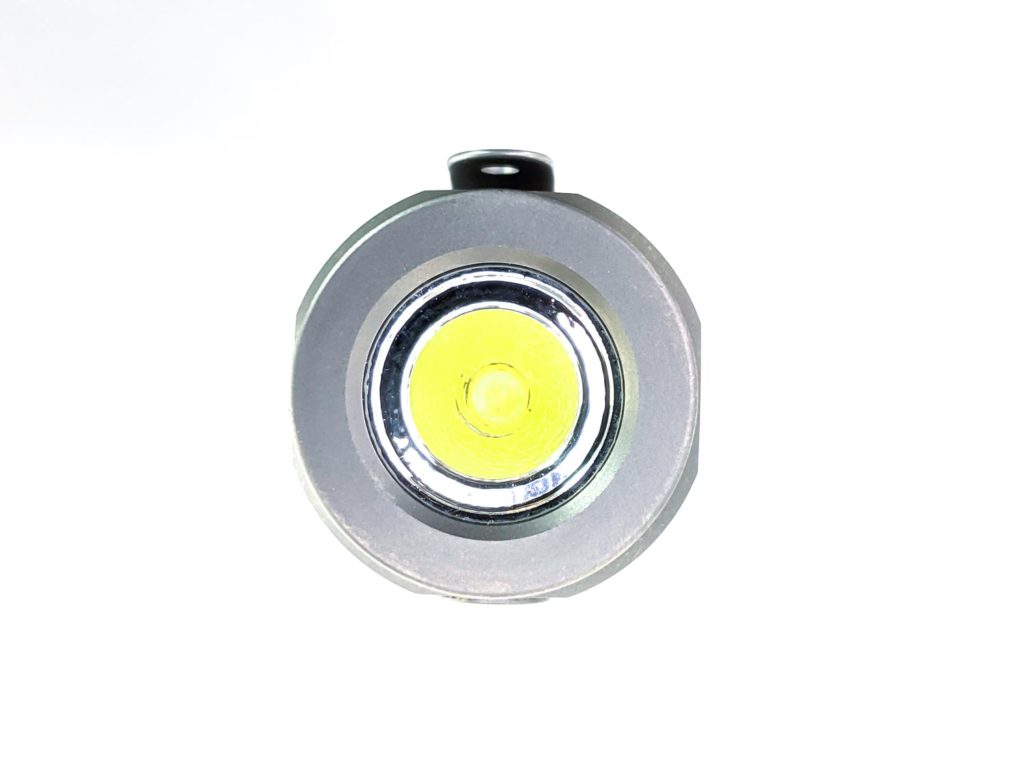
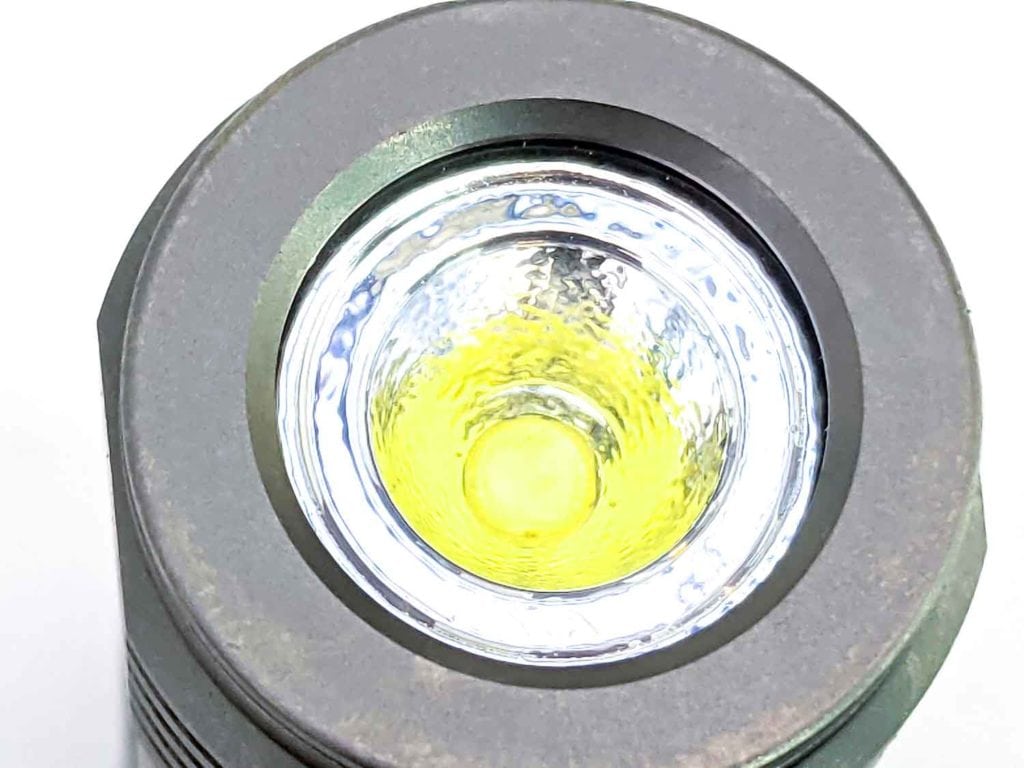
Dimensions and size comparison
- Length: 5.09cm / 2.00 inches
- Head diameter: 2.01cm / 0.79 inches
- Body diameter: 2.04cm / 0.80 inches
Weight:
- With cell: 49g / 1.7 oz
- Without cell: 30g / 1.1 oz
Flashlight size comparison
The Cyansky M3 is a similar length and bezel size to the Lumintop GT Nano. It’s also like a 3/4 length Imalent LD10. Comparison with other EDC / keychain lights:
From left to right: Zebralight H53c (AA), Thorfire TK05 (AA), Lumintop GT Nano (10180), Cyansky M3 (16340), Astrolux A02 (AAA), SingFire SF-348 (AAA), Thrunite Ti3 (AAA).
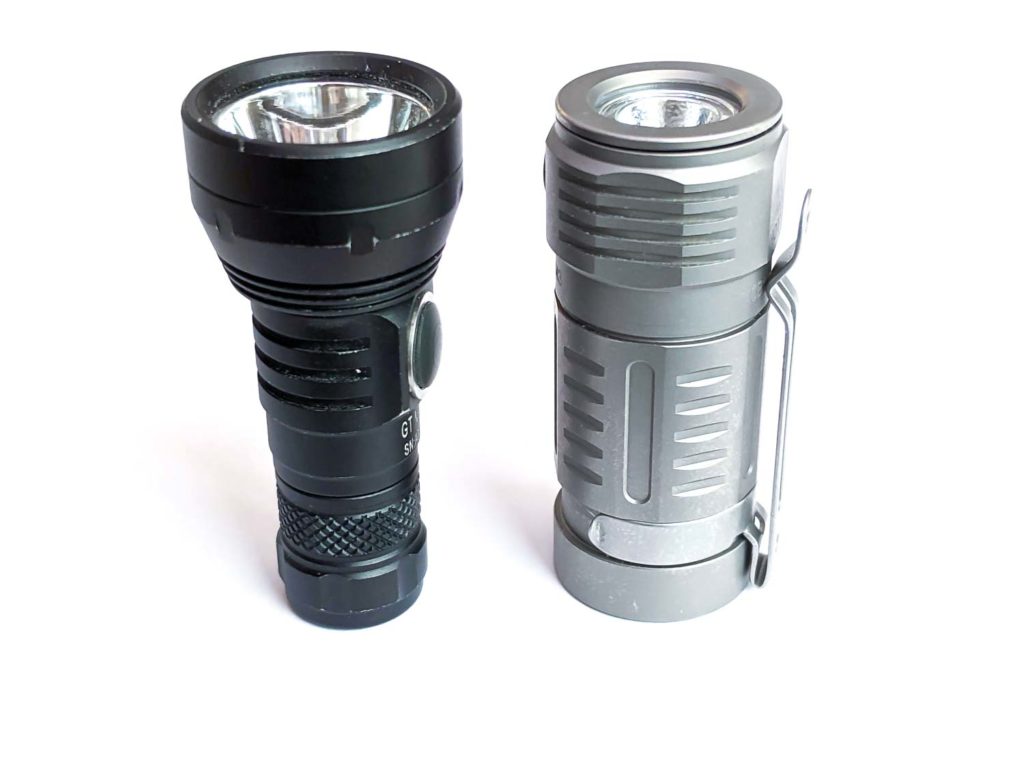
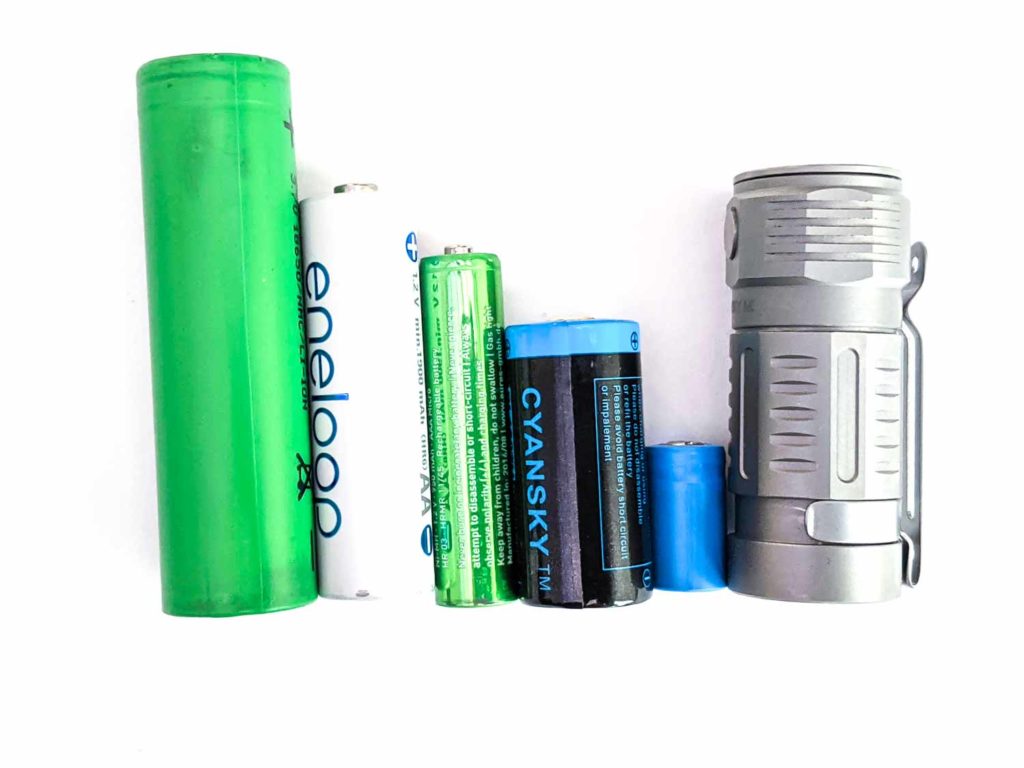
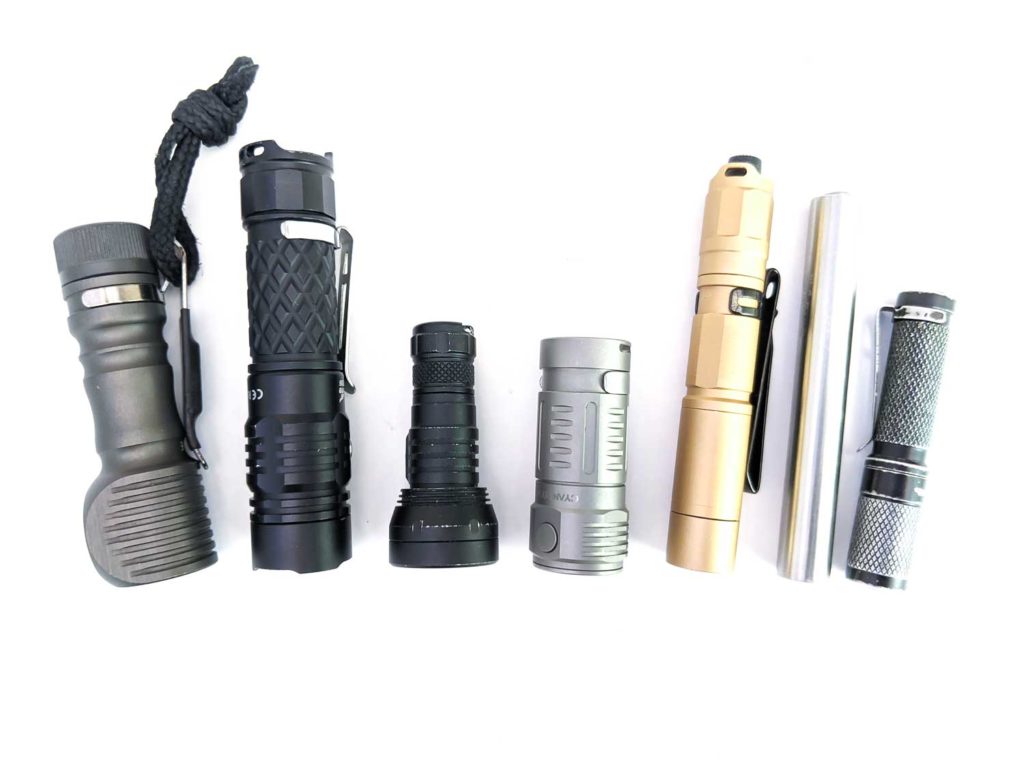
Driver & User Interface:
The Cyansky M3 has a side e-switch. They’ve gone with a hold to turn on, which is fairly sensible for a light you might keep on your keyring, to avoid accidental activation. As well as hold to turn on it also has double click to lock, which I found by accident and isn’t mentioned in the manual. When unlocking, the M3 goes straight into low mode. When off, you can’t tell if it’s locked or not – I kept forgetting and having to go through the fiddly lock-then-unlock process, waiting for all the blinks.
Always starting on low is a good choice in my opinion, as it means you can use the M3 indoors at night without risk of it going straight to high or turbo and blinding you. Using medium for the lock/unlock indicator seems odd though. The low is around 5lm, which is OK but when using the M3 for a few days I realised how much I made use of the sublime modes on my Zebralight. Having an additional moonlight mode on the M3 would be an improvement.
From off, if you hold down for too long then the M3 switches to strobe at the same brightness as turbo. This isn’t great but in practice, I haven’t accidentally activated the strobe mode yet. When on strobe mode, the M3 automatically switches between two strobe frequencies every 2 seconds: around 15Hz and 5Hz.
Modes: Low, Medium, High, Turbo, Strobe
From OFF:
- Hold: turn on low
- Long hold: turn on strobe
- Double click: blinks twice (medium brightness) and goes to lockout
From ON:
- Hold: Turn off
- Click: Next mode (L-M-H-T, then back to L)
- Long hold: turn on strobe
From lockout:
- Click or hold: blinks twice to signify lockout
- Double click: medium for a split second (like it’s about to blink), then low
Mode memory:
- No, it always starts on low
Low voltage warning:
- The provided cell has over discharge protection. It’s not clear if the M3 does too.
Strobe
- Click to go to low
- Hold for off
PWM
- I could detect PWM on low and medium modes with my phone but nothing significant.
Batteries & Charging
The Cyansky comes with a rechargeable 16340 (RCR123A) cell, rated at 700mAh and includes a micro-USB port. The cell is still only 34.6mm long though – barely longer than the standard 34mm. You can charge the cell with the built in port or with a cell charger that takes very short cells. Due to the physical reverse polarity protection on the M3, you’ll need a button top cell, which most 16340s seem to be.
Disposable CR123A cells are the same size and are supported by the M3. Disposables are more expensive and worse for the environment, so only really useful in an emergency.
The provided cell has an indicator LED of its own. This only turns on when it’s plugged in via USB: red for charging and green for fully charged. It charges at 0.35A during most of the time, which is exactly 0.5C. Charging takes a bit over 2 hours and stops when the cell gets to 4.17V. My USB meter showed 699mAh went into the cell – very close to the 700mAh spec.
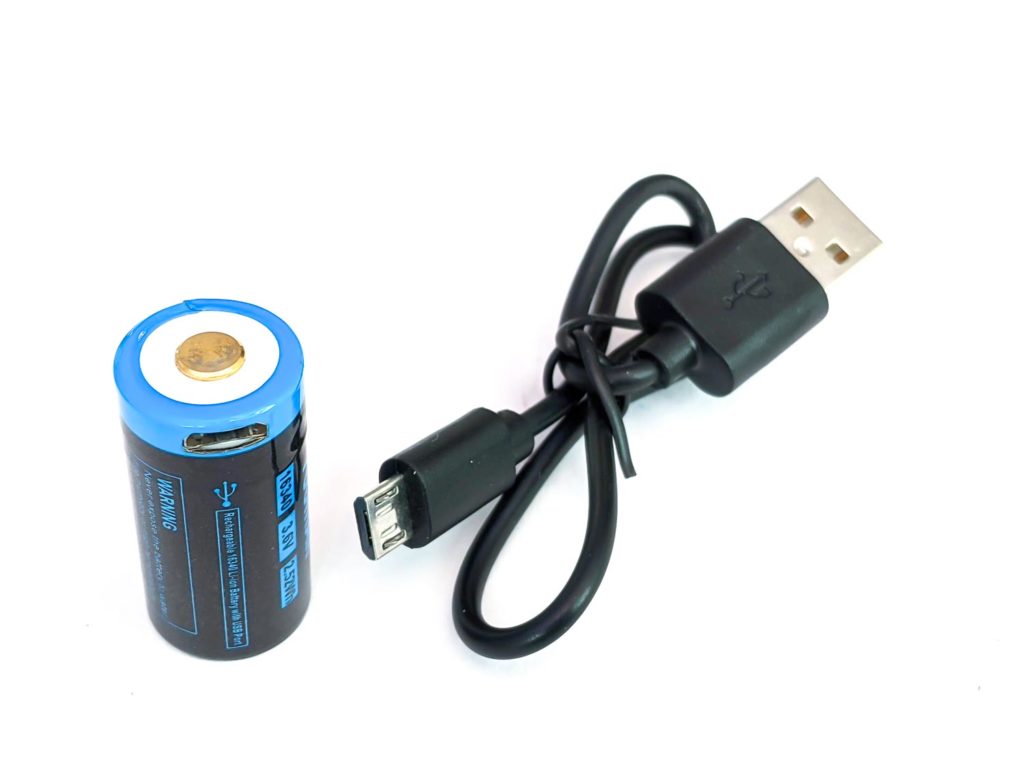
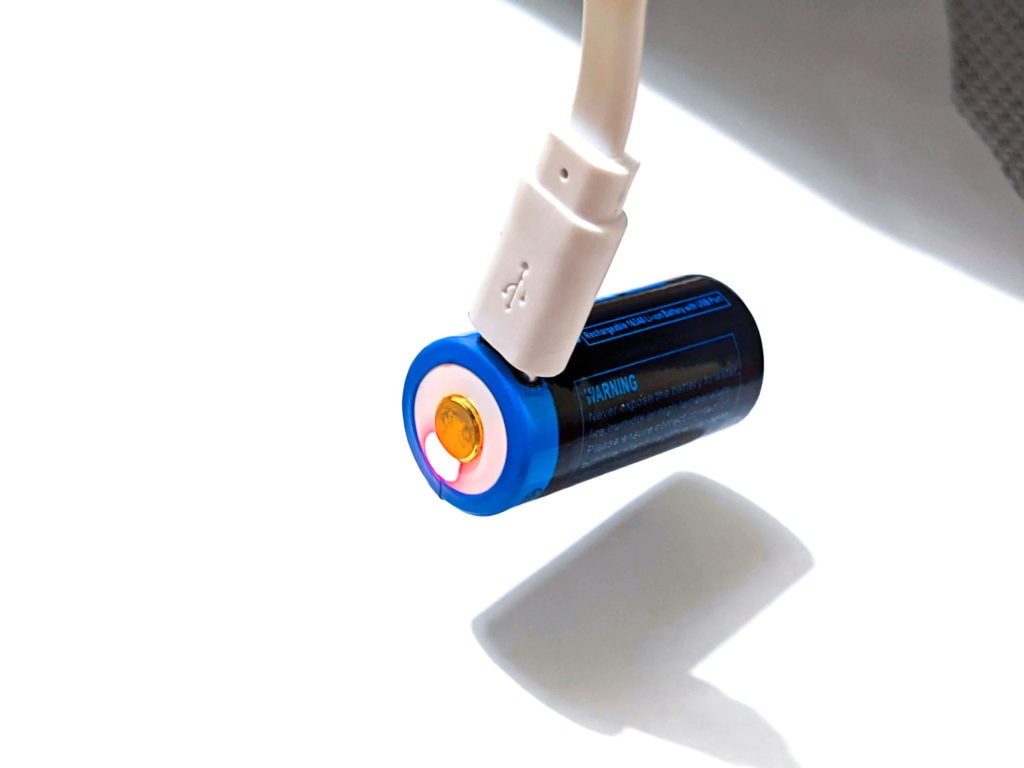
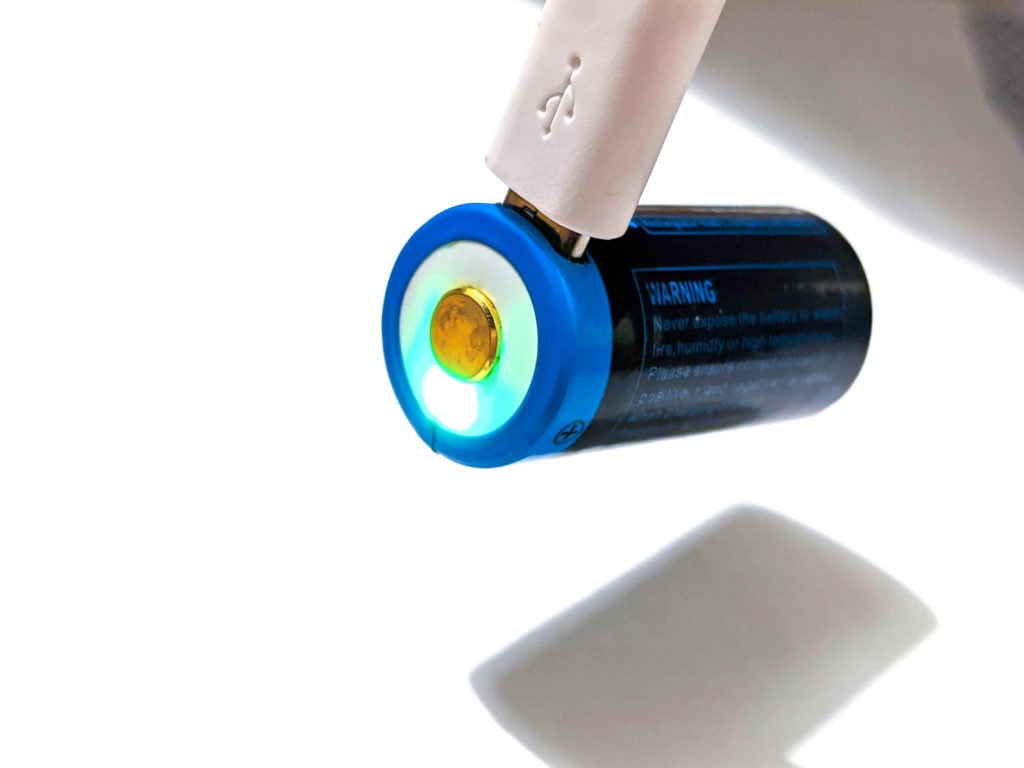
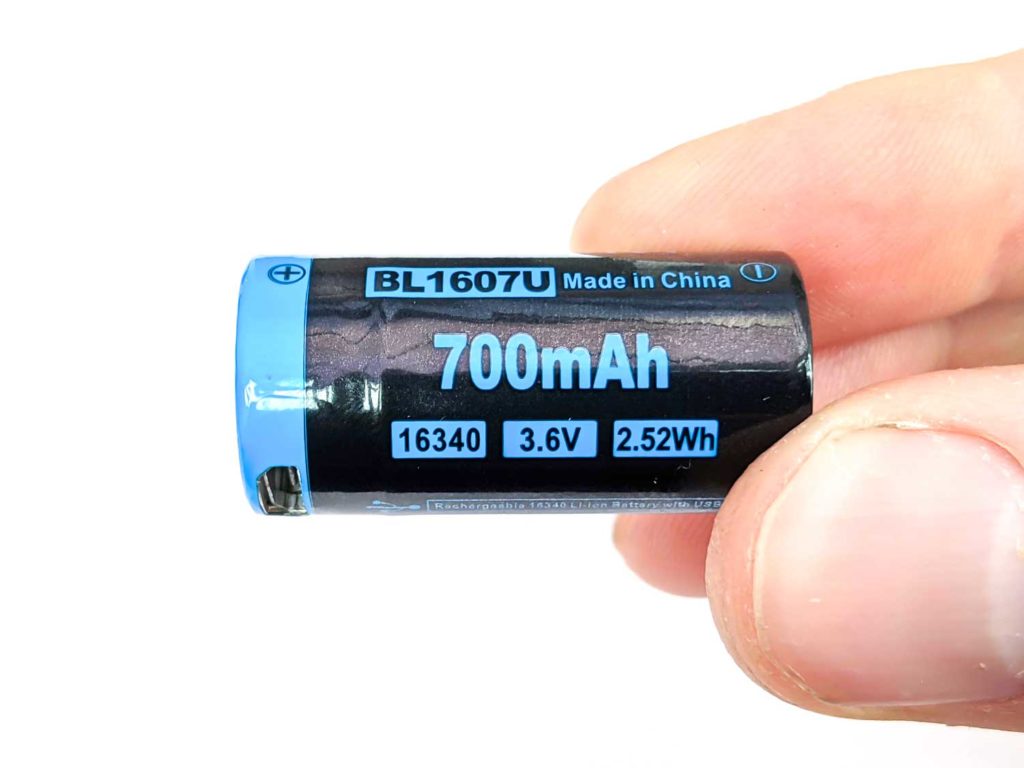
Performance
I used Cyansky’s provided 16340 cell for all measurements. Cyansky’s own runtimes state they used a disposable CR123A cell. Disposables normally have a higher energy density, so I was expecting the rechargeable to give shorter run times. In fact, my tests came up with significantly longer runtimes than Cyansky’s ones with the CR123A. Maybe the cells they used don’t perform well at high currents or maybe the M3’s driver isn’t happy with the lower nominal voltage of a CR123A.
Amp and lumen measurements
Current readings were taken with a Precision Gold PG10B DMM, all with the cell charged to 4.17V.
All lumen measurements are from my home made integrating sphere, calibrated with a range of factory specced lights. Lux measurements are done with a UNI-T UT383S lux meter and Adafruit TSL2591 connected to a Raspberry Pi (using RuTiTe by bmengineer). Expect them to be within +/-10%.
Throw was measured indoors at 5m.
| Mode | Current | Lumens | Throw |
|---|---|---|---|
| Low | < 0.01A | 5.1 lm | |
| Medium | 0.04A | 30.5 lm | |
| High | 0.20A | 145 lm (0s) 145 lm (30s) | |
| Turbo | 1.54A (0s) | 619 lm (0s) 446 lm (30s) 339 lm (10min) | 87m / 1900cd (0s)70m / 1225cd (30s) |
Runtime graph
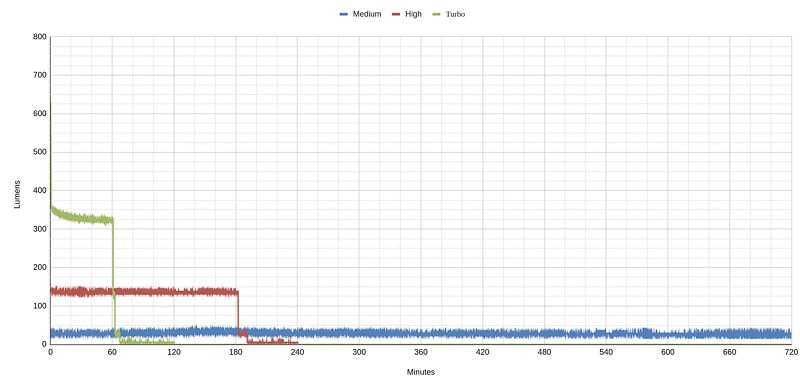
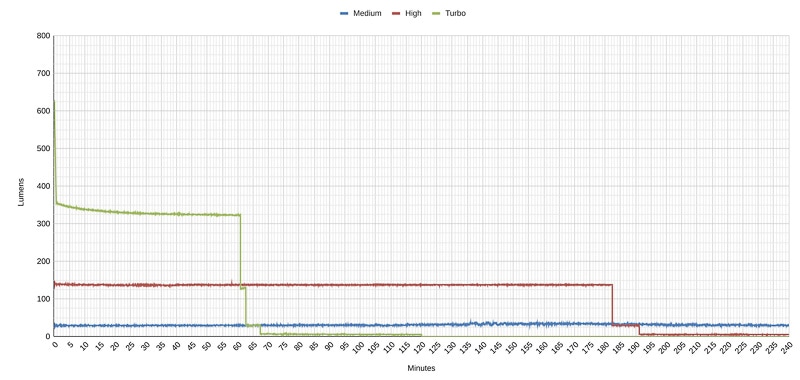
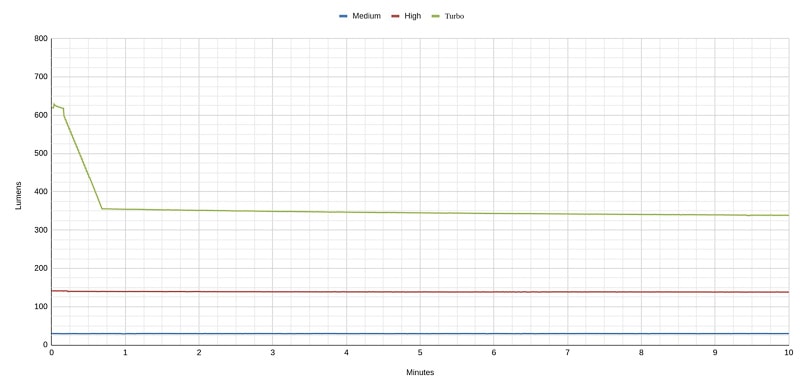
Turbo
I measured turbo starting off just over 619 lumens. It starts throttling almost straight away, dropping down to 446 lumens at 30 seconds. The M3 is specced at 700 lumens, which my one didn’t hit even at turn on. At 40 seconds it’s down to 340 lumens, where it levels off and sustains for an hour. The noise in the zoomed out chart seems to be an issue with Google Sheets, rather than anything the M3 is doing.
Although it didn’t hit the 700 lumens claimed, sustaining 340 lumens in a light this size is very impressive. How impressive? Well, that’s 50 more lumens than the Noctigon KR1 can sustain, which takes an 18650 cell! Or another example: after 1 minute this Cyansky flashlight won’t be noticeably different from the “6500 lumen” NlightD T90, which weighs 5 times as much. This probably sounds like magic but all Cyansky has done here is used an efficient regulated driver instead of a FET.
As the cell voltage drops, the M3 steps down to the high level, then medium, then low, then turns off.
High
The high mode maintains over 130 lumens for just 3 hours without stepping down. Similar to turbo, it then drops down to medium, then low and finally turns off.
Medium
Medium mode is around 30 lumens the whole time. Annoyingly I set my logging system to stop after 12 hours but when I came to check it the next morning the M3 had dropped to low but was still going. This means the M3 can sustain 30 lumens for somewhere between 12 and 14 hours.
Beamshots
Beamshots were taken with a Pixel 3a with a F1.8 and 4.4 lens. All photos were locked to 1/25s shutter, ISO1287 and fixed white balance. The Astrolux is 4000K and Zebralight 4500K. The other lights are all cool white.
Astrolux A02, Cyansky M3, Imalent LD10, Lumintop GT Nano, Zebralight H53w.


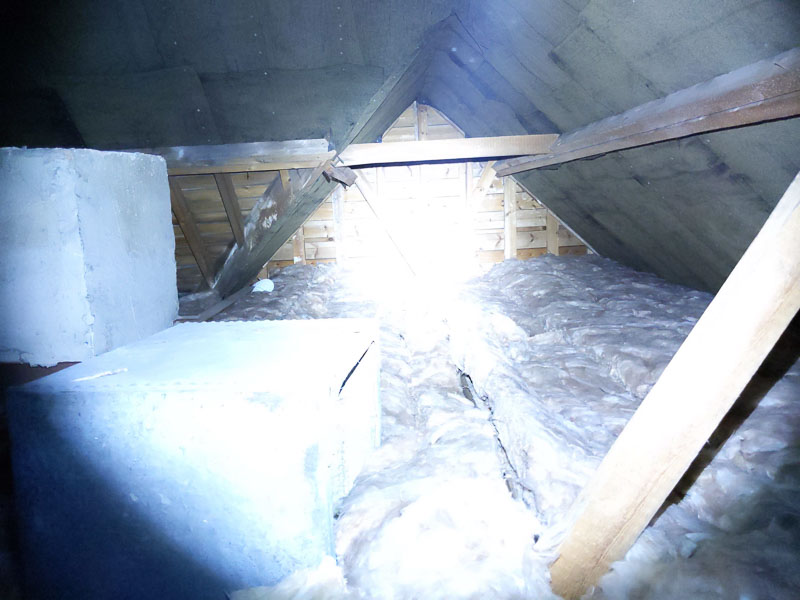
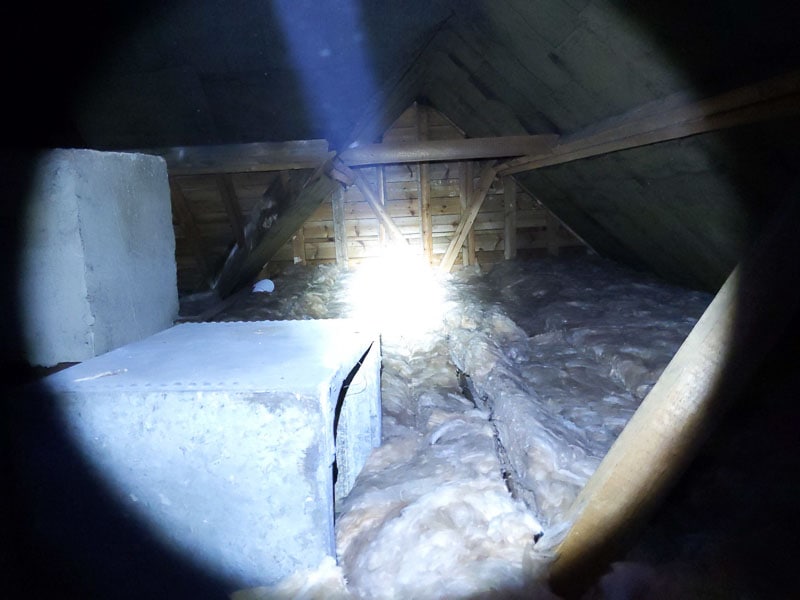

Disclaimer: This flashlight was sent to me for review at no cost by Cyansky/Freasygears. I have not been paid to review, nor have I been holding back on problems or defects.
Final Verdict
Pros
- Excellent sustained output
- Titanium!
- Feels solid and well built
- Built-in charging
- Bright for its size
Cons
- Switch is difficult to locate without looking
- Hold to turn on/off
- Pocket clip isn’t very strong

4 stars: ★★★★
After having the M3 clipped to my pocket and using it as my EDC for a few days, it just wasn’t quite for me. It’s a really well made light and I love the titanium but the switch and UI just make it awkward to use. I’m used to a Zebralight with an easy-to-find button and single click to turn on/off. Compared to that, the M3 just felt slow. By the time you found the switch and waited for it to turn on, precious seconds have passed.
The hold-to-turn-on might work well if it was carried on a keychain and I can see why Cyansky didn’t want the button to stick out. The double click to lock is helpful but in practice is a bit awkward to use. It would be nice if it automatically locked if it was turned on from lockout. With a switch that protruded a bit more, it’d be a great EDC flashlight.
With the switch and UI taken care of, that still leaves the driver and light output itself. The brightness at turn-on is good (even though it’s below spec) but what really sets the M3 apart is sustaining over 300lm for an hour in such a small light.
The XP-G3 is bright and efficient but as far as looks go it’s far from my favourite. Many people will like the cool white but as an around-the-house light it’s noticeably harsh and lower CRI compared to other lights I have.
If you’re happy with the UI and cool white LED then the M3 is almost perfect. The host itself and build quality is very good. The driver is almost magic. If you’re after a tiny titanium flashlight then the M3 is a good option. I can easily imagine a few small updates to the M3 – a better switch, tweaked UI and warm white high CRI LED option (219B or E21A if they could make them fit) – that would make it a 5-star flashlight.
Buy your Cyansky M3 here:
1lumen selects and reviews products personally. We may earn affiliate commissions through our links, which help support our testing.